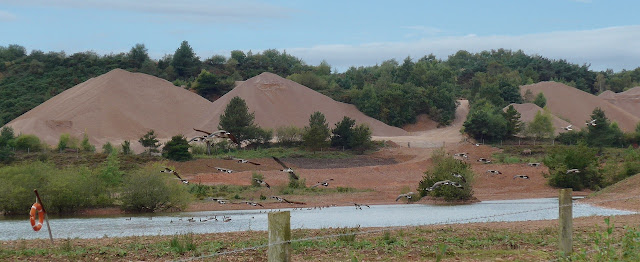How perspectives on #groundwater vary depending on supply-demand & environmental pressures, together with governance. In South Africa: "Groundwater the saviour we need to take care of" https://t.co/nASN4bmOUY via @Cape Business News
— Mike Jones (@GroundwaterMike) July 25, 2021
Dr Lukas says because groundwater is something that cannot be seen by the naked eye, the general public has many misconceptions about groundwater. Some people think that you can drill a hole just anywhere and that you will find water, others believe that water flows in underground rivers. It generally moves very slowly, only a few meters per year.
According to Wang et al (2012) the unsaturated zone velocity for the Sherwood Sandstone Group falls in the range 0.6 – 2.3 m/year with a mean of 1.06 m/year
A measure of the rate that water can flow through an aquifer. Often taken to mean permeability with respect to water. The term normally is applied to saturated hydraulic conductivity. Unsaturated hydraulic conductivity has a smaller value and applies only to the unsaturated zone.
Hydraulic conductivity is a property of the soil, whether it is the (highly varying) hydraulic conductivity in the unsaturated zone or the saturated hydraulic conductivity in the saturated zone. The infiltration rate generally is a flux which depends on the hydraulic conductivity, but also on other variables and parameters such as the wetness of the soil, land use/ land cover, slope, crust formation etc.. Water movement in the vadose zone also is dependent on the hydraulic conductivity and linked to the infiltration rate, but not the same. The infiltration rate is the inflow into the soil, where the water movement in the vadose zone is the flow inside the soil.
recharge to the BSPB (as present at Straitgate) is best represented as a single quick release number, independent of unsaturated depth because conceptually of its more fractured nature etc.
recharge reaches the water table in the BSPB through unsaturated thicknesses of between approximately 3 and 10 m within between 1 and 3 days. 2.7.3
the results of these infiltration tests results were not applied, and a value of 1m/d was used instead. This is still a precautionary approach, since recorded recharge rates in the BSPB deposit are in the order of 3 m/d to 9 m/d... as evidenced by the ongoing groundwater level monitoring. 2.10.6
Linking rainfall events with changes in groundwater level is not an attempt to prove that the rainfall has reached the water table rapidly (although there is some evidence from hydrographs on site that suggest this happens)
Although their methodologies are not necessarily widely recognized, the AFW infiltration tests contribute to a substantial body of evidence that water moves through the unsaturated zone at a relatively quick rate (in the order of at least 0.1 – 0.5 m/d), meaning that travel through the unsaturated zone is measured in days/weeks rather than years.
Infiltration rates of 1m/d (0.0416 m/hr) were applied to the infiltration ditches/ponds based on robust and extensive hydrogeological assessments...














